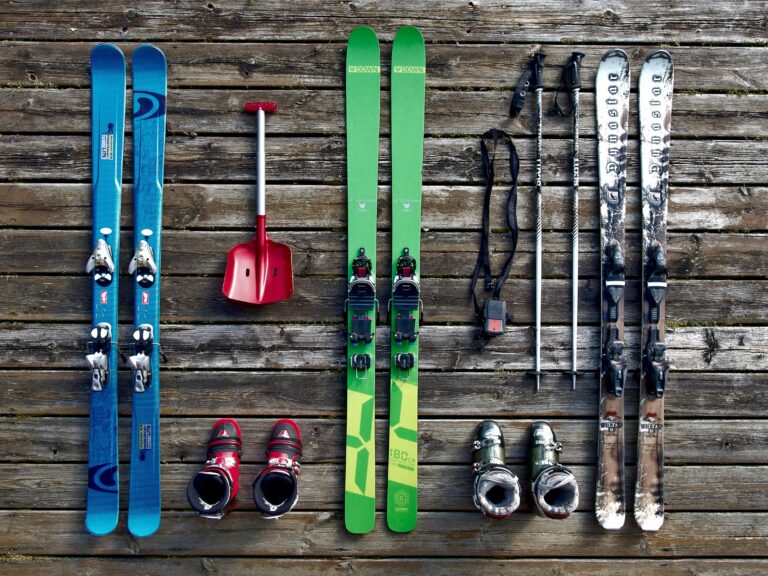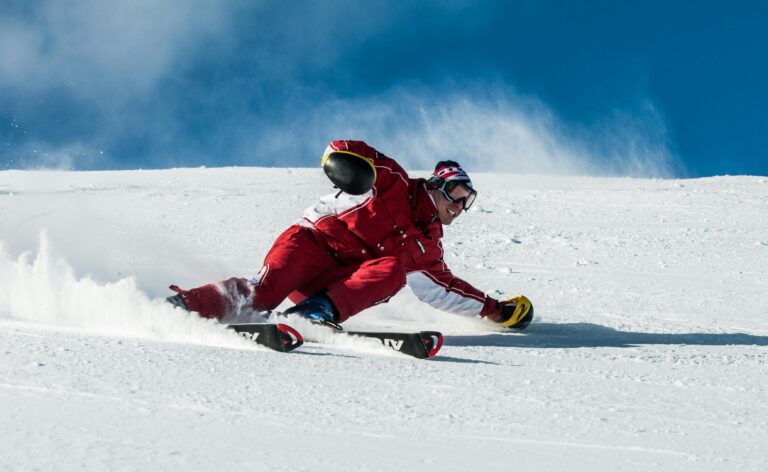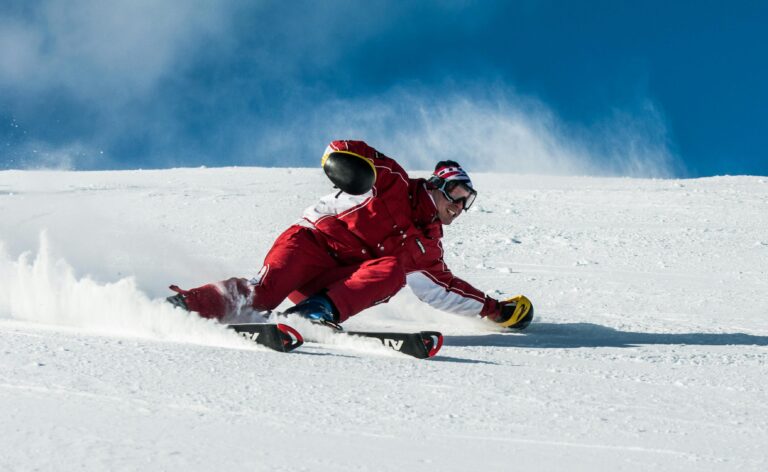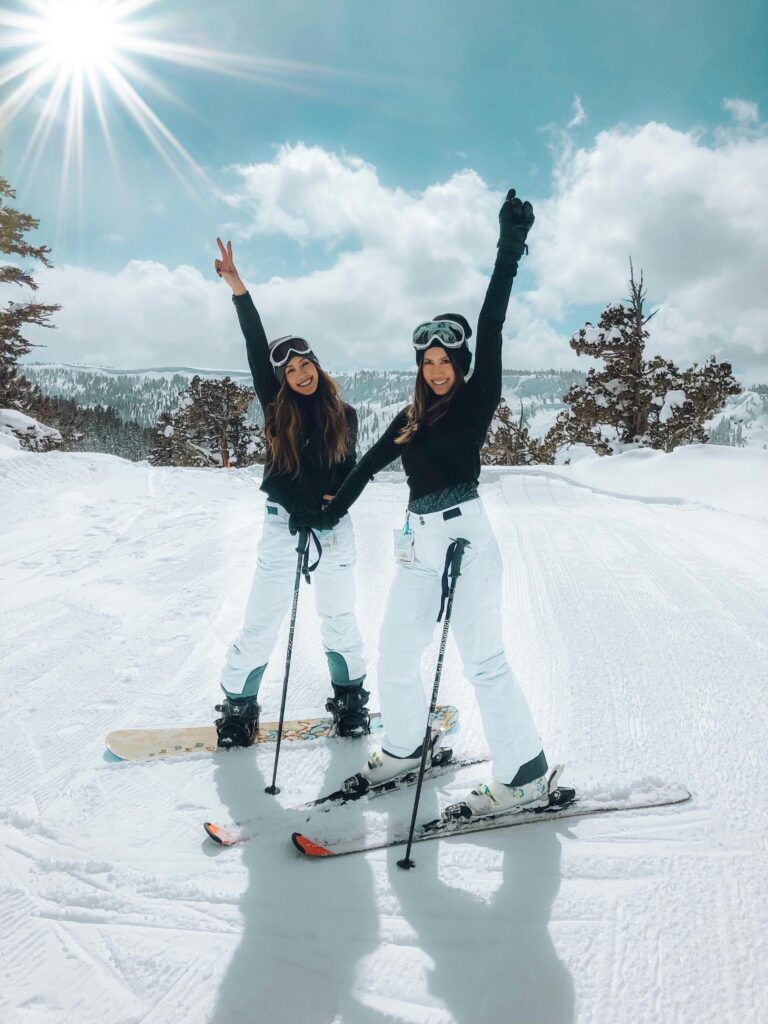So, you’re either wobbling down a beginner trail or already a seasoned pro itching to push your limits. Whatever your level, picking the right skis is huge. Beginner skis are forgiving and steady, while advanced skis give you the speed and precision you need to tackle tougher lines. Stick with me here — I’ll break down what sets beginner and advanced skis apart, how you’ll know it’s time to upgrade, and how to pick the best skis for your journey on the snow.
Understanding the Differences: Beginner vs. Advanced Skis
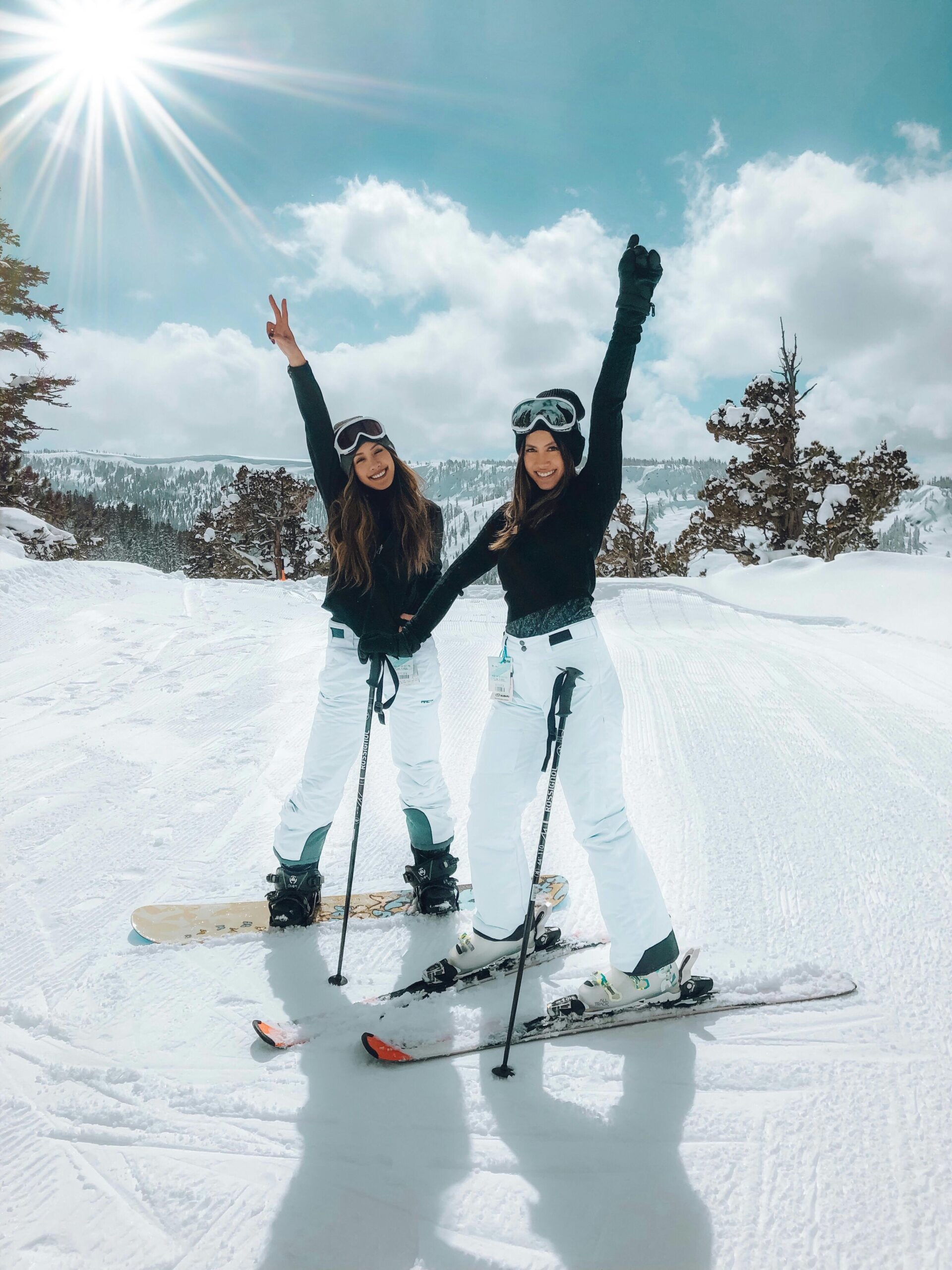
Beginner skis are typically softer and more forgiving, which helps with stability and control for new skiers. They often feature a wider shape and lighter materials that make turning easier. Advanced skis are stiffer and designed for speed and responsiveness, making them better suited for challenging terrains. Upgrading becomes essential when consistently tackling difficult runs to maximize performance.
Think of beginner skis as your training wheels on the snow. They’re wider, shorter, and softer, giving you stability and flexibility when you’re still figuring out how to turn and stop without falling flat on your face. These skis are built to boost your confidence, not your speed.
Now, advanced skis? They’re like the sports car version — stiff, fast, and reactive. They let you carve hard and respond instantly to every bump and turn. If you find yourself charging down slopes that make even Olympic skiers sweat, it’s probably time to step up your gear.
If you’re budgeting for new skis, my guide to choosing skis lays out skill levels, costs, and timing in a straightforward way — definitely worth a read before you buy.
Switching skis is like trading in your reliable old bike for a sleek racing one—the feel changes, you connect deeper with the mountain, and skiing becomes way more thrilling.
How Ski Types Affect Performance
The width of skis significantly impacts their stability and agility. Wider skis offer more surface area, which enhances stability on powder but can hinder quick turns. Length also matters; longer skis increase speed but can reduce maneuverability. Additionally, rocker profiles provide varying benefits, with rocker increasing float in powder and camber enhancing grip on harder snow.
Understanding your skis’ shape and design can make the difference between a smooth run and a clumsy crash.
Ski Width
- Wider Skis: Great for beginners. More surface area means better stability, especially in powder or soft snow. You’ll feel less wobble as you work on your balance.
- Narrower Skis: Favored by advanced skiers who need agility for tight turns, whether weaving through trees or bombing steep runs.
Ski Length
- Shorter Skis: Easier to control and turn, perfect when you’re still learning how to navigate the slopes. They’re forgiving when you slip up.
- Longer Skis: Give you more speed and stability at high velocity but demand more skill to handle confidently.
Rocker vs. Camber Profiles
- Rocker (Reverse Camber): Rocker helps skis float in powder and makes turning easier — a big help for beginners. Fewer edge catches mean fewer falls.
- Camber: Delivers serious edge grip on hard-packed snow, ideal for advanced skiers chasing precision and speed.
Recognizing Your Skill Level: When to Upgrade
Signs indicating readiness for an upgrade include consistent performance in varying conditions, a desire to tackle steeper slopes, and seeking new challenges. Expert testimonials suggest that if you find beginner skis like a natural extension of your body, it may be time to level up for improved engagement with your skiing experience.
Figuring out when to ditch beginner skis isn’t always obvious, but here’s what I’ve learned:
- Confidence: When blues and blacks slide beneath your skis effortlessly, it’s a good sign you’re ready.
- Technique: Getting compliments (or critiques) from friends and instructors? They might be gently nudging you toward better gear.
- Craving Challenge: If you want to test yourself on tougher runs or at higher speeds, it’s time.
One skier shared on Reddit, “I was stop-and-go on blue runs and felt flat—then I switched to advanced skis. Game-changer!” [source]
Common Mistakes When Choosing Skis
Some common pitfalls in the ski selection process include purchasing skis that are too advanced for one’s skill level or choosing skis based on brand rather than suitability. New skiers often underestimate the importance of flex and width. Reading user experiences emphasizes that selecting the right fit can greatly enhance performance and enjoyment.
Picking skis isn’t just about fun; it’s about safety and your skiing mojo. Watch out for these common slip-ups:
- Overestimating Your Skills: Jumping onto stiff, high-performance skis too soon usually leads to frustration and falls.
- Ignoring Flex and Width: Flex affects how your skis respond; width can help or hurt turning ability depending on your style.
- Buying Because They Look Cool: Spoiler: flashy logos don’t make you ski better. Focus on what fits your style.
A YouTuber confessed, “I bought advanced skis early on and hated them. When I switched to beginner skis, I finally improved.” [source]
The Impact of Ski Technology on Performance
Modern advancements in ski technology significantly enhance performance for varying skill levels. Beginner skis utilize lightweight materials that foster quicker learning, while advanced skis incorporate innovations like carbon fiber and advanced rocker technologies, affording greater speed, stability, and maneuverability on challenging terrains.
Ski tech updates faster than your app refreshes. Here’s what you need to know:
Materials & Design
- Beginner Skis: Made with soft plastics and composites to keep things light and forgiving—perfect if you’re focusing on learning.
- Advanced Skis: Packed with fiberglass and carbon fiber for strength and stiffness, helping you nail precise turns at faster speeds.
Innovations
- Sidecut Technology: Smoothes turning, making it easier to carve whether you’re new or advanced.
- Lightweight Builds: Help advanced skiers perform better, and still keep beginner skis stable where it counts.
Curious for more? The National Ski Areas Association and the American Association of Snowboard Instructors are great spots to geek out on ski tech.
Specific Models to Consider: Best Beginner vs. Advanced Skis
The following table outlines specific models representing the best characteristics of beginner and advanced skis, including their defined features, price ranges, and user ratings. Choosing the right model greatly enhances the skiing experience by aligning equipment with skill level and skiing style.
Here’s a handy table showing some of the best skis tailored for whether you’re just getting started or ready to shred like a pro:
| Ski Model | Type | Features | Price Range | User Ratings |
|---|---|---|---|---|
| Rossignol Experience 76 | Beginner | Lightweight, soft flex, easy maneuvering | $300 – $500 | 4.7/5 |
| K2 Disruption 76 | Beginner | All-mountain adaptability, forgiving edges | $350 – $550 | 4.5/5 |
| Volkl Mantra 102 | Advanced | Solid edge grip, high-speed stability | $650 – $800 | 4.8/5 |
| Atomic Vantage 90 TI | Advanced | Versatile, great for mixed conditions | $600 – $700 | 4.6/5 |
Pick what suits your style. If cruising groomers is your vibe, the Rossignol Experience has you covered. For off-piste thrills, the Volkl Mantra 102 is a beast.
Caring for Your Skis: Maintenance Tips for Beginners and Advanced Skiers
It’s vital to maintain your skis properly, regardless of skill level. Beginners should focus on basic maintenance such as regular waxing and edge tuning. Advanced skiers require more detailed care, including frequent inspections for base damage and adjusting bindings to optimize performance for their level.
Think of your skis like your car—ignore maintenance, and you’ll be stuck on the side of the slope. Here’s what you should be doing:
For Beginners:
- Waxing: Aim to wax every 5-10 ski days to keep things smooth.
- Routine Checks: Give your skis a once-over for scratches or damage regularly.
For Advanced Skiers:
- Tuning: Every 3–5 days on snow means time to sharpen edges and smooth bases.
- Base Repairs: Fix small gouges fast. Keep those edges sharp to handle high speeds and rough terrain.
For more detailed tips, check out Consumer Reports.
How Rental Skis Compare to Ownership
Renting skis can be a cost-effective choice for beginners honing their skills. Conversely, purchasing skis provides seamless integration with one’s advancing abilities. To make an informed decision, assess how often you’ll ski. Frequent skiers may save by investing in their gear, while occasional skiers can benefit from rental options.
Choosing between renting and owning skis is like deciding whether to stream a movie or hit the theater.
Renting Skis
- Pros: Great for casual or new skiers who want to try different styles without a big commitment.
- Cons: Rental gear doesn’t always fit perfectly or match your skill level, which can drag down your experience.
Ownership
- Pros: Custom gear that fits your style and skills can seriously boost your performance and fun. Plus, you avoid rental mismatches.
- Cons: It’s an upfront investment with extra maintenance costs later. But if you ski often, it usually pays off.
Frequent skiers I’ve talked to say owning gear feels way better than constantly renting mismatched skis.
To crunch the numbers, I’ve broken down ski rental prices so you can decide what fits your wallet and schedule.
Fun Facts: Ski Popularity and Participation Trends
Recent statistics show that approximately 10.3 million Americans participated in skiing during the 2020-2021 season, with consistent growth observed over the years. Interest from younger demographics highlights the increasing appeal of ski sports, influencing gear choices among both beginners and advanced skiers.
Here’s something that surprised me: skiing’s popularity is on the rise! The National Ski Areas Association says 10.3 million Americans hit the slopes during the 2020-2021 season.
And it’s not just older folks anymore. Younger skiers are embracing the sport, pushing brands to innovate gear that suits different skill levels and styles.
This buzz means skiing is evolving — and your gear options are growing.
Key Tips for Transitioning from Beginner to Advanced Skis
Beginner skiers preparing to upgrade should reflect on their skills and experiences. A checklist that ensures readiness might include assessing comfort on black diamonds, confidence in turns, and seeking speed. Consulting experts like those from the U.S. Ski Team can enhance understanding and bolster skills.
Thinking about making the leap to advanced skis? Here’s how to make the switch smoother:
- Check Your Comfort: Can you handle steeper runs without feeling scared? Knowing your limits helps you push them safely.
- Take Lessons: A good instructor can spot what you need to work on and guide your transition perfectly.
- Try Before You Buy: Rent some advanced skis first to see how they feel. It’s the best way to avoid surprises.
Experts, including folks from the U.S. Ski Team, say upgrading is about the whole package: skill, gear, and mindset.
Moving up is all part of growing as a skier. Each run brings you closer to mastering the mountain.
Want to sharpen your skills? Check out our guide on learning how to ski at any age.
FAQs
What are the signs a skier is ready to upgrade their equipment?
Common signs include increased confidence on diverse terrain, consistent skiing with ease, and self-reported improvements in technique. Regularly seeking new challenges, like steeper slopes, also indicates it’s time to consider advanced skis for better performance.
Can I use beginner skis if I continue to progress in skills?
Using beginner skis as your skills improve can restrict your ability to explore tougher terrains. While these skis provide a good foundation, transitioning to advanced models ensures they meet your growing abilities and demands for performance.
How often should I replace my skis if I’m skiing frequently?
Replace skis based on usage, typically every 50-100 days of skiing. Signs for replacement include visible wear, decreased performance, or a significant shift in your skill level that warrants upgraded equipment. Regular inspections help decide the exact timing.
Are advanced skis worth the investment for enthusiastic skiers?
Yes, advanced skis can greatly enhance performance and technical ability for enthusiastic skiers. The right equipment that matches skill level improves control and enjoyment, making the investment worthwhile for committed individuals looking to progress.
Skiing gear can transform your whole experience on the mountain. With the right setup for your level and goals, your runs will feel smoother, faster, and more fun. Curious about rentals versus owning? I’ve got you covered in my ski equipment rental prices guide.
If you prefer a visual breakdown of gear options, check out this video:
And don’t miss this one while shopping for new skis!

